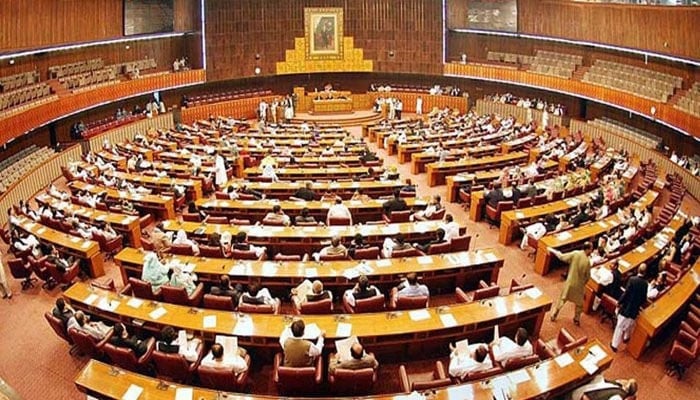The 16th National Assembly of Pakistan has been characterized as “slow-paced despite high attendance” despite the fact that it completed its first 100 days after MPs were sworn in on February 29.
Focusing on “parliamentary transparency and gender responsiveness” was cited as a defining feature of NA’s first 100 days in a report released by the Free and Fair Election Network (Fafen).
The research also stated that by giving the opposition roughly 54% of the time utilized for points of order, the House promoted bipartisanship.
After the general elections held on February 8, no political party was able to achieve a clear majority, which led to instability in the Pakistani government.
Thus, with the backing of eight parties—the Pakistan Peoples Party Parliamentarians (PPPP), the Muttahida Qaumi Movement-Pakistan (MQM-P), the Pakistan Muslim League Quaid (PML-Q), the Istehkam-e-Pakistan Party (IPP), the Pakistan Muslim League Zia (PML-Z), the Balochistan Awami Party (BAP), and the National Party (NP)—the PML-N formed the federal government.
However, the House still lacks 26 members.







